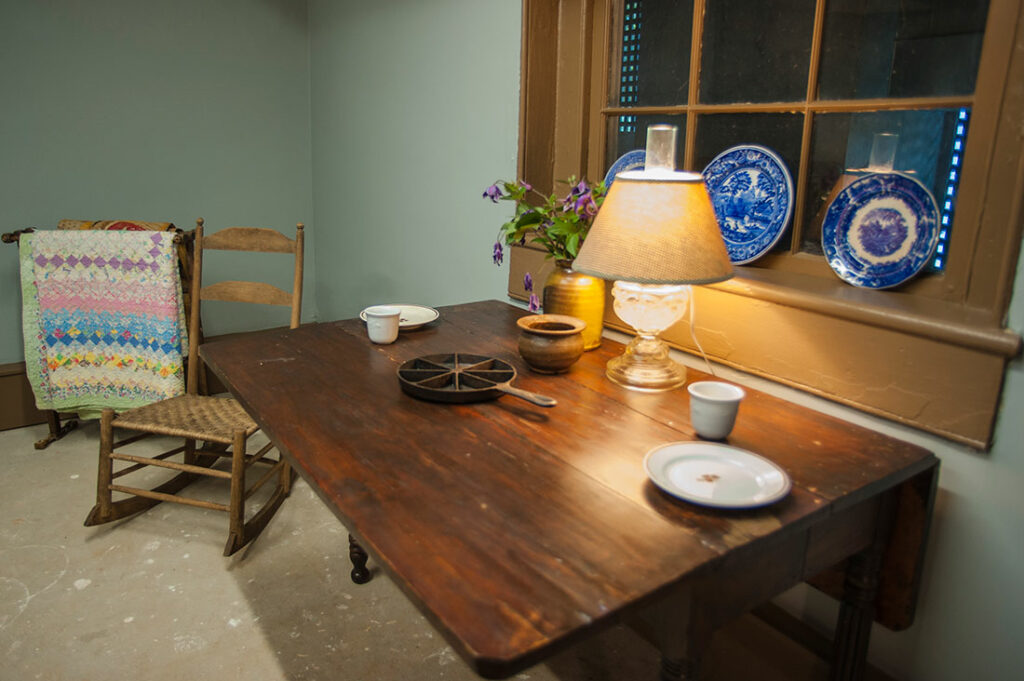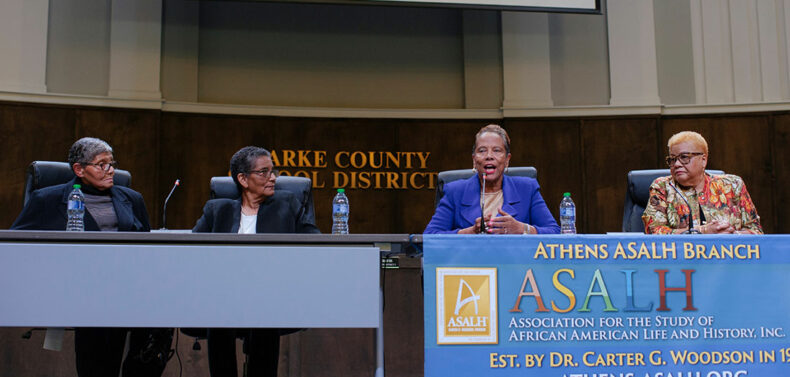Integrating Clarke County’s public schools went relatively smoothly for a Southern city in the Jim Crow era—there were no riots, no National Guard, no governors standing in the schoolhouse door. That doesn’t mean it wasn’t painless, though, especially for the five children tasked with carrying it out 60 years ago this month.
At a recent ceremony honoring those five students, Bonnie Hampton Neely Travis (then Bonnie Hampton) recalled walking to school the morning of Sept. 2, 1963, along streets lined with police officers, with parents behind them hurling insults at her. She entered her homeroom at Clarke County Junior High late, and “nobody said a word,” she said. Then, finally, another girl turned around and whispered, “hi.” At lunch, Hampton said no one wanted to sit with her, and no one wanted to touch her during gym activities. Some teachers and classmates assumed she was unintelligent because of her skin color, but she proved them wrong, going on to earn a master’s degree and enjoy a 35-year career with BellSouth.
Agnes Green, who also integrated Clarke County Junior High, said the man who picked her up to drive her to school that morning had a gun sitting in the front seat. “That’s when I realized this could be a little dangerous,” she said.
The others honored at the Sept. 17 ceremony, organized by the Athens chapter of the Association for the Study of African American Life and History and moderated by WUGA’s Alexia Ridley, included: Wilucia Green, who graduated from previously all-white Athens High and went on to earn three degrees; her sister Marjorie, who integrated Clarke County Junior High and later raised three children; and Scott Michael Killian, a deacon and landscaping business owner. As children, they “broke barriers that had never been broken in this city, and will never need to be broken again,” said the Rev. Benjamin Lett, pastor of Hill First Chapel Church.
While some recollections remain sharp, others fade with time, or were too early to form at all. “My memory really doesn’t go back that far,” said Killian, who entered all-white Chase Street Elementary as a third-grader. He did recall getting into trouble once because he came to school with his pockets full of snakes.
Killian is the son of the late Archibald “A.R.” Killian, who along with Donald Moon integrated the Athens police force. There was no debate in the Killian household about what school Scott Michael Killian would attend when the opportunity arose. “[My father] wanted me to do it, so I did it,” he said.
The four women all credited their mothers for making the decision to take the risk of being first when tensions were high—just two weeks before Klansmen bombed 16th Street Baptist Church in Birmingham, AL, killing four Black children. “Wilucia and I grew up in a household where we were constantly reminded of our responsibilities,” said Marjorie Green.
“My mother was the force behind everything I did,” Hampton said. “I don’t remember having a choice.”
Everyone around them recognized the importance of the mission. “It was bigger than integrating the schools,” said local civil rights leader Fred Smith Sr. “It was about integrating the community, the nation.” Hampton said she was encouraged by the Rev. Martin Luther King Jr. himself, who asked her if she was afraid. “I remember telling him no, I wasn’t afraid,” she said.
But it came at a cost—and not just enduring the ignorance of white classmates and teachers. Agnes Green (who is unrelated to Wilucia and Marjorie) said she returned to all-Black schools after one year because she missed her friends. For her, attending Clarke County Junior High was the first time she’d experienced hatred. “Nobody judged you by the color of your skin, because in segregated society everybody looked alike,” she said. Back at Lyons Middle School and Burney-Harris High School, she was a popular, academically successful student and an athlete.
Agnes Green’s basketball skills also made white students at Clarke County Junior High more accepting of her. “Once they found out I was an athlete, they were nice to me,” she said. “It softened the blow.” There were also two boys—the sons of a surgeon and a haberdasher—who had been around Black people before and befriended her.
In Wilucia Green’s experience, though, the boys were worse than the girls. “As long as the young girls didn’t have guys around, they were much nicer,” she said.
Hampton broke down the white students at Athens High into three categories: “There were the ones who knew better, there were the ones who didn’t, and there were the ones who went along with it,” she said.
“It was so irrational,” Wilucia Green said of her white classmates’ racism. “You dealt with it as you had to.” Killian had a similar attitude: “They were racists,” he said. “That’s all they was.”
As painful as her experiences were, Hampton said they helped her in the long run—she became comfortable being the only Black person in a room full of white people. “What happened to me, what I went through, has carried me all along the way,” she said.
Hampton graduated from high school in 1969, part of Clarke County’s last class before integration fully took hold. After the landmark 1954 Brown v. Board of Education ruling outlawing so-called “separate but equal” school systems that were anything but, it took nine more years for desegregation to begin in Clarke County. Afterwards, the school district proposed a plan involving busing that the Georgia Supreme Court struck down. CCSD took the case to the U.S. Supreme Court and won, and in 1970 the local public schools were fully integrated, with Burney-Harris and Athens High consolidating into what’s now Clarke Central.

At a Taylor-Grady House reception following the panel discussion, photos and newspaper clips from the era were on display alongside the antebellum furniture and portraits of 19th century white aristocrats. A nonprofit led by caterer Lee Epting—whose uncle Eugene was the attorney who argued in favor of Clarke County’s integration plan—recently took over stewardship of the house as a museum and event space.
The house’s basement now includes a recreation of the servants’ quarters and exhibits about Aggie Carter and Isaac Mills, who were enslaved by the local Cobb and Taylor families. Freed after the Civil War, they went on to help found the Knox School, Athens’ first school for African Americans. Their children, Louisa and Fanny, attended Atlanta University (now Clark Atlanta), the first Black university in the South. Fanny eventually became principal of the Brooklyn School, educating another generation of Black Athenians.
While some speakers noted the progress that’s been made, much work is left to be done, said DeKalb County CEO Michael Thurmond, a native of Athens who wrote a history of the city’s Black community as a young man in the 1970s. “You don’t change 400 years of slavery and segregation and racism in 60 years,” he said. “Let me repeat that: You don’t change 400 years of history in 60 years.
“We will continue to fight,” Thurmond added, “until truth and justice roll down like mighty waters.”
Like what you just read? Support Flagpole by making a donation today. Every dollar you give helps fund our ongoing mission to provide Athens with quality, independent journalism.










